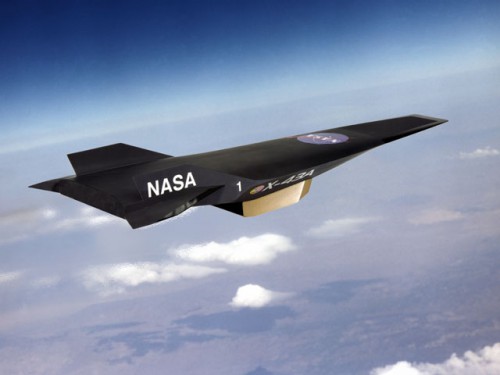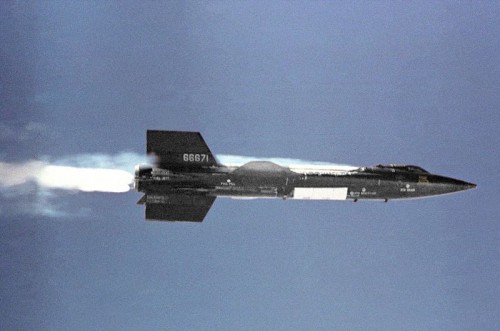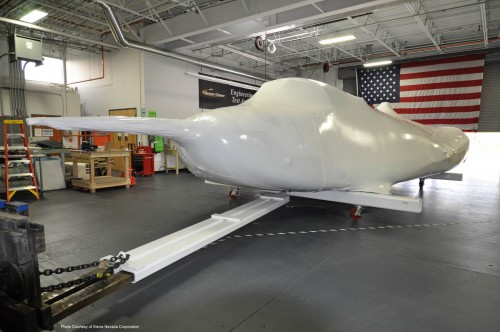
A spaceplane is quite simply a vehicle that can fly as both an airplane in the atmosphere—generating lift from its wings—and as a spacecraft in a vacuum using rocket propulsion. No spaceplane has yet been built that can both take off and land as an ordinary plane and also travel into space. However, there have been five successfully flown vehicles to date that fall into the spaceplane category and many others still on the drawing board.
The earliest technical study of the feasibility of spaceplanes was carried out by the German scientist Eugene Sänger in the 1930s and published in his book “The Technology of Rocket Flight.” Sänger went on to assemble a variety of ramjet engines, one of which he tested on a Dornier 217 in April 1942. After the war, Sänger’s work on hypersonic flight served as the basis for the development of the X-15 and, ultimately, the space shuttle.

Built by North American and operated by the U.S. Air Force and NASA, the X-15 set records for speed and altitude by an aircraft—some of which still stand today. It was both a rocketplane and a suborbital spaceplane, its Reaction Motors rocket engine powering it to speeds in excess of 4,000 mph and a peak altitude of 67 miles. On a regular basis it flew higher than the Air Force’s definition of the edge of space (50 miles, or 80 km) and twice went beyond the atmosphere as defined by the International Federation of Aeronautics (FAI)—the so-called Karman line at 62 miles (100 km).
The space shuttle was the first orbital spaceplane, but unlike the X-15, which was carried up under a B-52 mother ship, was launched vertically with the help of a rocket stack combining both expendable and reusable components. Once in orbit it had no means of propulsion other than maneuvering thrusters and could only glide back to a runway on Earth. The Soviet Union’s Buran, closely modeled on the shuttle but capable of automatic flight, made just one trip into space, in 1988, before the program was scrapped through lack of funding.

Like Buran, the Boeing X-37, which started out as a NASA project in 1999 but is now operated by the U.S. Air Force, is launched by an expendable rocket, flies without a pilot, and lands automatically on a runway. It’s the only one of various spaceplace concepts in the long-running X-plane series to have actually reached orbit and returned successfully.
The future of spaceplanes may lie largely in the private sector. But Rutan’s Scaled Composites company has already successfully flown its SpaceShipOne beyond the Karman line at speeds exceeding Mach 3 and is now testing the much larger SpaceShipTwo capable of lofting a two-man crew and up to six fee-paying passengers on suborbital flights. Virgin Galactic plans to start commercial flights using this innovative craft within a couple of years.
A long-standing dream of rocket scientists and engineers is to build a single-stage-to-orbit spaceplane that would both take off and land under its own power using a conventional runaway. Overall weight is a major problem with this kind of approach, since the vehicle must carry all the fuel it needs for the round trip, as well as its own weight plus payload, into orbit. The nearest thing to such a vehicle currently under development, by Reaction Engines in the UK, is Skylon—an un-piloted spaceplane with a 15-ton payload capacity, powered by twin engines that can run combined air-breathing and rocket cycles. Ultimately, the development of spaceplanes, both for access to orbit and hypersonic suborbital flights between major cities, is likely to be driven by commercial demand.
Want to keep up-to-date with all things space? Be sure to “Like” AmericaSpace on Facebook and follow us on Twitter: @AmericaSpace




Good article…To be sure this tech is making the world a much smaller place…Truly it won’t be long where we live on one continent and work on another….
David – I think that the definition you are using for spaceplane is overly limited. I suspect that thinking about spaceplanes using the definition will result in going down paths that lead to dead-ends, which always hurts us.
I’d argue that we have to think about spaceplanes not based on being able to use wings to generate lift, but rather can achieve plane like operations. This kind of definition would apply to things like the Delta Clipper, or a fully reusable Falcon 9, or multiple other options. Because plane like operations, whether with or without wings, would make space much more accessible.
Ferris, “spaceplane” has always been one of those terms that are open to interpretation and different definitions. The particular one I used isn’t my own, of course, because my opinion isn’t what matters. It’s just one that has been used frequently down the years. Some would argue, in fact, for a more restrictive definition — namely, that a spacecplane must be able to take off and land from a (long) conventional runway and achieve orbit with a single stage; for example, the Orion III in the movie 2001: A Space Odyssey. The only such vehicle currently in development that I know of is UK Reaction Engine’s Skylon. For what it’s worth here’s my encyclopedia entry on the topic: http://www.daviddarling.info/encyclopedia/S/spaceplane.html
David,
I will acknowledge that there isn’t an agreed on definition of spaceplane. But, that being the case, your opinion does matter, as you are the author of the piece. These facts being the case, it might be worthwhile to mention the point of disagreement, or state what your view is of a spaceplane, or something like that.
Stating the definition of spaceplane the way you did presents problems, as I stated
The first sentence of the article pretty well summarizes how I think of spaceplanes.
Then I go back to my original point – the definition you use is overly limited, and can lead us into dead ends, and therefore should be avoided.
Dear Ferris,
AmericaSpace welcomes a variety of opinions & points of view. Supporting diversity is key to having a vibrant discussion, whether it comes from readers or staff. We feel what should be “avoided” is stifling views to comfort those who disagree with them. Facing something that contradicts your personal beliefs is extremely valuable as it makes you go outside your comfort zone.
To provide you with a example of how beneficial this is, think about our debate about what constitutes NewSpace – rather than just saying, “Your definition is to be avoided” – I took a look at the context of your comments, considered them & now I agree with you. Would that have happened if I demanded everyone post stories/comments that strictly adhered to my personal definition of things? I don’t think so.
Sincerely and with much thanks, Jason Rhian – Editor, AmericaSpace
Jason,
I felt I laid out my point about why the definition of spaceplanes should be avoided in my original post. I can expound on it, but kind of assumed this was straight forward.
By focusing purely on a technical, engineering definition, we can end up assuming the only way forward is a winged spacecraft. This may seem overly simplistic, but I’d argue that history actually justifies understanding these things a little deeper. We’ve spent 30-40 years chasing the idea of “cheap access to space”, and we never actually understood what that meant. We assumed that it was a purely technical problem. The solution to cheap access will be a reusable vehicle (space shuttle), will be scramjets (NASP), will be SSTO RLVs (X-33/VentureStar). None of that delivered, because we attacked the problem from a purely technical perspective, and didn’t look at the entire picture, to include things like operations, markets, and so on (not saying technical isn’t important, but its not enough)
I’d argue that using the definition provided (having wings) leads you down a similar path, and assume that wings are vital for large scale access to space (the last paragraph, at least from my perspective, could easily lead someone to think in that direction). This results in ignoring cheap access options in terms of VTVLs, or space elevators, and so on. Because we should be looking at all of these.
The problem is (and I do realize this) that this is ultimately a semantics argument.
Ferris,
Not trying to come down on you, just saying that while it’s fine to say: “I disagree with you…” It’s not okay to say that one person’s take on something is to be avoided. You say we should be looking at all of the different issues involved with spaceplanes you list – so the question is – why is what David wrote so detrimental to a conversation on the subject? All I’m saying is let others express themselves. AmericSpace tries to inform the general public about space matters from a variety of viewpoints.
As to the value of wings – two-thirds of the commercial competitors under CCiCap – have opted to forego a spaceplane based design. I think for the sake of simplicity this is sound. However (& I believe I’ve said this before) – I like the idea of LEO cargo being handled by capsule-based designs (CST-100, Dragon & Cygnus) & crew being handled by a spaceplane-based design (Dream Chaser). I’m well aware that CST-100 isn’t involved in COTS/CRS. I’m just saying, in terms of crew, I like the idea of a design that lands back on a runway as opposed to splashing down (If SpaceX keeps on the path it’s on, they might render this preference moot).
Having said that, I’m not going to say those that completely opposed to my view are stating something that should be avoided. Who knows what I might miss if I behaved that way. Does that make better sense?
Sincerely, Jason Rhian – Editor, AmericaSpace
Jason,
I am not trying to shout him down, or be disrespectful. I truly do believe that the definition provided should be avoided, for the reasons I cite. If those aren’t really clear, I don’t know how else to explain it. It really boils down to using a term that not everyone agrees on, which can muddle debate (and I don’t mean in an intentional or dishonest way – its as simple as making certain both side speak the same language, or making sure that people are aware of their base assumptions).
Ferris,
I know you weren’t. Just be cognizant that when you respond to everyone that state things you disagree with – it appears that way.
Sincerely, Jason Rhian – Editor, AmericaSpace